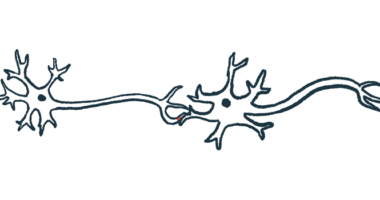CMTRF funds Vanderbilt research on potential CMT1A treatments
The project seeks to restore healthy functioning levels of PMP22 protein

The CMT Research Foundation (CMTRF) has invested in a project at Vanderbilt University School of Medicine Basic Sciences for potential new treatments for Charcot-Marie-Tooth disease type 1A (CMT1A).
The project will be conducted by Charles Sanders, PhD, a biochemistry and medicine professor and vice dean at Vanderbilt. Sanders’ team hopes to restore healthy functioning levels of PMP22.
“Currently, there are no effective treatments or cures for people with CMT1A. Fortunately, the primary target in CMT1A is known – excess PMP22,” Sanders said in a CMTRF press release
CMT is a group of genetic disorders that affect the peripheral nerves, which control movement and sensation in the limbs. It can lead to the degeneration of nerve fibers and/or the myelin sheath, an insulating fatty layer that wraps nerve fibers and facilitates nerve signal transmission.
The primary cause of CMT1A is duplications (an extra copy) of the PMP22 gene, which provides instructions for producing the peripheral myelin protein 22 (PMP22), a critical component of myelin. PMP22 is mainly found in Schwann cells, the myelin-producing cells in the peripheral nervous system.
It’s normally expressed at the cell surface, but when gene duplications occur, nonfunctional PMP22 protein accumulates inside cells, disrupting the myelin sheath’s structure and function.
“This is a multistep project using multiple approaches to discover agents that restore PMP22 to healthy functioning levels. This raises the possibility that CMT1A could be treated by improving PMP22 trafficking within Schwann cells without changing the amount of gene or protein expression,” Sanders said.
This raises the possibility that CMT1A could be treated by improving PMP22 trafficking within Schwann cells without changing the amount of gene or protein expression.
Bruce Carter, PhD, professor of biochemistry at Vanderbilt and a member of the CMTRF Scientific Advisory Board, will join Sanders as co-principal investigator in this project.
The amount of funding was not released. The research is also supported by Ancora Innovation, which supports Vanderbilt’s life science research.
“Recently, Dr. Sanders and his team developed new cell-based approaches to target the PMP22 protein and are now ready to direct these approaches to enable drug discovery. If this effort is successful, the project will be well positioned for further preclinical evaluation in mouse models,” said CMTRF CEO Cleary Simpson. “Vanderbilt has world-class expertise and capabilities to make breakthrough discoveries toward the development of novel therapeutics.”
CMTRF is a patient-led nonprofit organization focused on delivering treatments and cures for CMT. It invests in promising science deemed of high potential.







